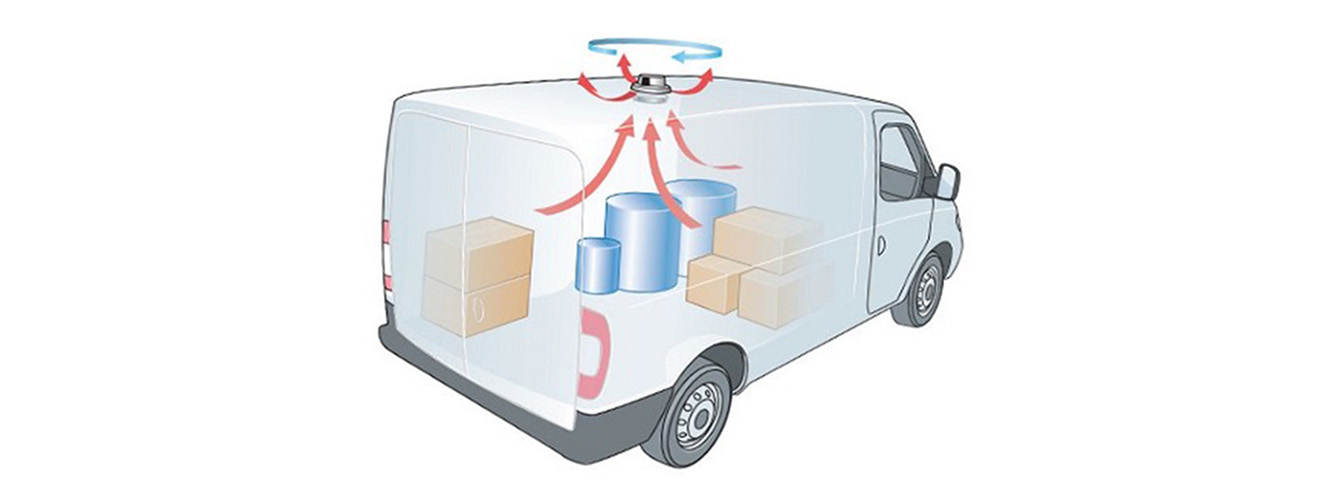
What does the legislation say about ventilation in your van?
In Germany, a roof ventilator is mandatory when transporting dangerous goods. In the Netherlands, there are no regulations yet on the use of a roof ventilator on your van. Crazy, of course, because hazardous products such as gas cylinders, flammable liquids and chemicals can cause pretty dangerous situations. Sufficient ventilation is necessary so that explosive gas mixtures cannot occur.
However, regulations for transporting hazardous substances with a van have been drawn up in the VLG (Dangerous Goods Land Transport Regulations). If you carry limited quantities of hazardous substances in your van, the so-called 1000 points regulation applies. This requires you to ensure adequate ventilation in your van for certain gases. This can be done by fitting a roof ventilator.
Eumos guideline
As there are no complete guidelines for transporting hazardous materials in vans yet, a new guideline (EUMOS 40250) is being developed by EUMOS, the international organisation for promoting transport safety, for transporting hazardous materials such as gas cylinders and other explosive materials in vans. The aim of this new standard is to provide measurable standards to determine whether there is sufficient ventilation in the vehicle.
When transporting other goods, the use of a roof vent is not required by law. But in many cases, it makes sense to install a roof fan on your van. We list the options for you:
Safe working environment
Van as mobile workshop
When transporting other types of goods, there is nothing in law about the use of a roof ventilator. However, the owner of a van does have a duty of care towards the driver in many countries. An entrepreneur must ensure that his employees can work as comfortably and safely as possible. Drivers should therefore not be exposed to unnecessary risks such as heat or fumes. By installing a roof ventilator, these risks are eliminated and work can be as pleasant as possible.
Keeping temperatures low
Transporting refrigerated or perishable goods in a van
When transporting some goods just wise to install a roof fan. When transporting chilled or perishable goods, for example, you want to keep the temperature in your van as low as possible. Similarly, when transporting animals such as dogs, you want to remove the heat from your van and bring in fresh air. The inside temperature of non-ventilated vans can rise to 38 ºC in the sun during the day and even higher when the van is stationary.
Reducing condensation
Transporting wet or damp goods in a van
When wet overalls and equipment are stored in the van, a roof fan can reduce condensation. This can prevent equipment damage and interior deterioration caused by water and mould.
Are you interested in a roof fan?
As you have read, a roof fan is not always mandatory, but in many cases it is handy. We have several roof fans available from stock, such as our in-house developed Easy Aero roof fan.





